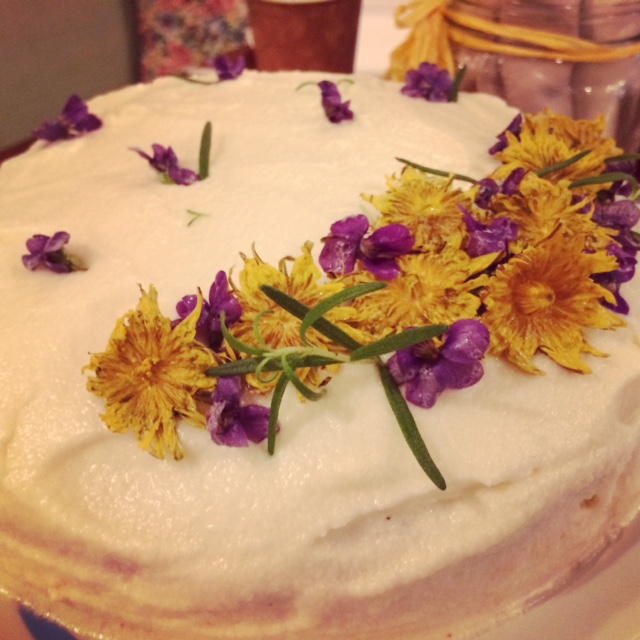
Edible Spring Flowers
Spring in Berea, Kentucky is a time of blooms, blossoms, and fresh flowers. It is also a showcase of some of the finest weather to be had in the Southeastern states. Crisp 40 degree mornings still reminiscent of winter’s chill slowly transition into sunny, vibrant afternoons. The air is ever-so-slightly damp, a premonition of the heavy, humid summer days to come, but the moisture is welcome after so many cold, dry winter days.
To celebrate the return of warmth and color, flowers are tended and cherished, both in- and out-of-doors. What many people don’t know is that the same flowers that they delight in seeing and smelling during spring’s peak are also edible! Among the most vibrant are dandelions with their characteristic bright yellow blooms that turn into balls of white seeds that are the delight of children everywhere, and tiny Johnny Jump Ups with their vivid purple and yellow coloring.
Dandelions (French for “lion’s tooth”) are fairly unpopular in many landscaped yards. Their deep taproot makes them hard to be removed and conventional methods of spraying herbicides to kill the leaves and flowers can be harmful to surrounding grasses and pollinating insects that collect pollen from the blooms. However, every part of the plant is edible, and scientific studies are emerging that show that dandelions have surprising health benefits, from promoting liver function to managing diabetes.
Johnny Jump Ups, or violas, are close relatives to pansies (which are also edible). They often grow of their own accord, but can be planted as a heat-resistant cover crop under trees.
Sugared Dandelions and Johnny Jump Ups
In order to preserve these edible flowers and use them on your preferred desserts (like the old-fashioned vanilla cake shown above) you can use sugar-coating. This simple method keeps the flowers fresh for longer and creates a hardened outer shell that makes them easy to handle.
First, pick dandelions and Johnny Jump Ups from a yard, preferably one that is not being sprayed with pesticides or herbicides. Gently rinse the flowers and set them out to dry on a paper towel.
Prepare the sugar-coating ingredients. Lightly whisk one or two pasteurized egg whites. Set the egg whites aside. Next, prepare the sugar. Finely ground sugar is best. The consistency should be somewhere between regular cane sugar and powdered sugar. Blend regular cane sugar in a food processor for less than 30 seconds to achieve this consistency.
With a clean paint brush or your fingers, lightly coat the flowers with the whisked egg whites. Dip or sprinkle each flower with the sugar. Gently shake off the excess sugar and set the flowers on a clean surface to dry.
After the flowers have dried, you are free to use them as a fresh, floral and tasty addition to your sweet culinary creations!